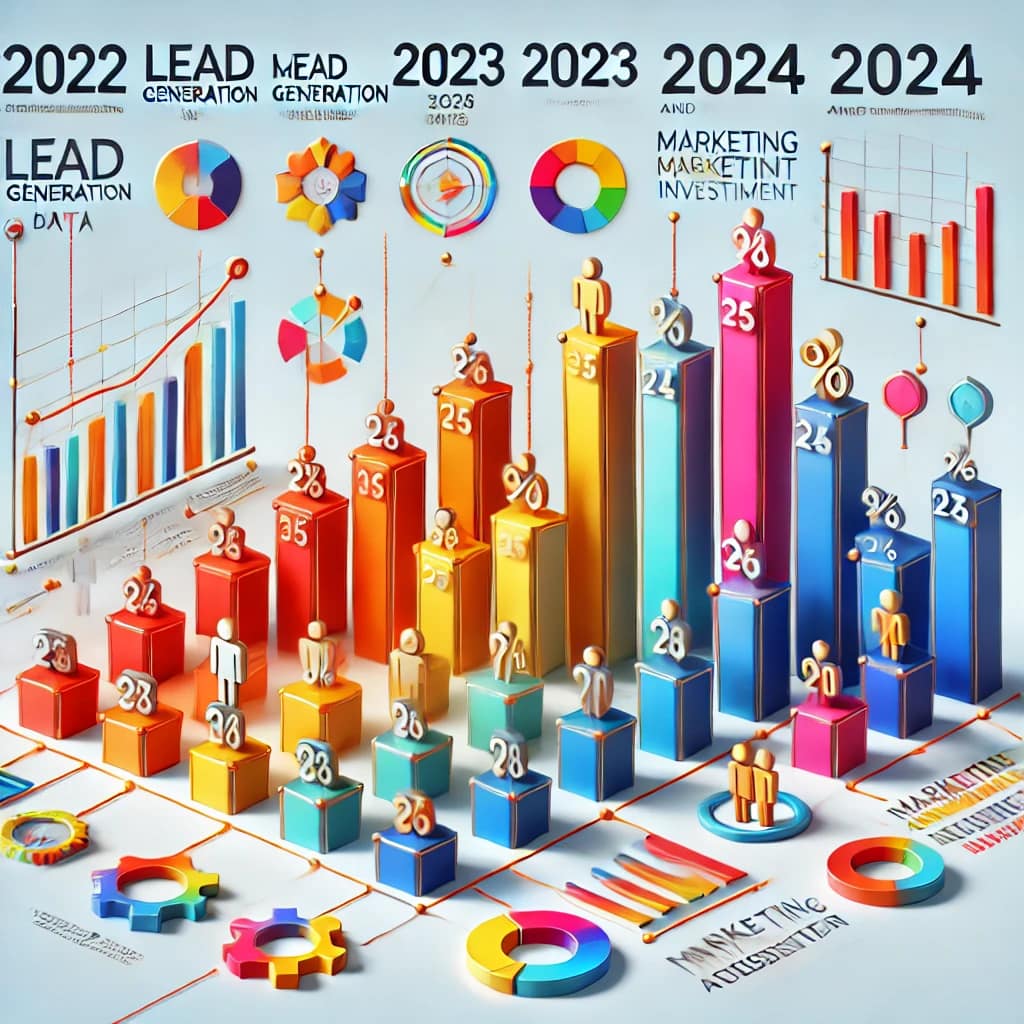Understanding Lead Generation
Lead generation is a critical process in the realm of marketing, designed to attract and convert potential customers into interested prospects. It encompasses various strategies and methodologies aimed at capturing the attention of individuals who may have an interest in a product or service. As businesses continue to evolve in the digital landscape, the importance of lead generation has grown, becoming a pivotal component of successful marketing campaigns.
At its core, lead generation involves identifying potential customers, often referred to as “leads,” and encouraging them to engage with a brand. This process can occur through numerous channels, including digital platforms, social media networks, and email marketing campaigns. Digital marketing, in particular, has showcased extraordinary growth in lead generation efforts, utilizing content marketing strategies such as blog posts, webinars, and downloadable resources to attract relevant audiences.
Social media serves as another powerful channel for lead generation, as platforms like Facebook, LinkedIn, and Instagram provide opportunities for businesses to connect directly with their target demographics. By sharing valuable content, businesses can foster relationships with potential customers, resulting in higher conversion rates. Email marketing also plays a key role in lead generation, allowing brands to deliver personalized content and offers directly to the inbox of interested individuals, thereby nurturing leads effectively.
It is essential to distinguish lead generation from sales. While lead generation focuses on identifying and attracting potential customers, sales strategies are concerned with closing the deal and converting leads into paying customers. Effective lead generation enhances sales efforts by supplying a steady stream of quality leads, ultimately contributing to overall business growth and improving the customer journey. These leads are more likely to result in meaningful engagements and long-term relationships, underscoring the crucial nature of mastering lead generation in today’s competitive market.
Strategies for Effective Lead Generation
Effective lead generation is critical for businesses aiming to convert potential customers into loyal clients. Implementing a range of strategies can significantly enhance lead generation efforts, making it essential to apply diverse techniques tailored to specific audiences.
One of the most potent approaches is content marketing. By creating valuable, informative, and engaging content, businesses can attract potential leads naturally. This might include blog posts, e-books, webinars, and videos that resonate with the interests of the target audience. When these materials are shared across multiple platforms, they can increase visibility and drive traffic to the company’s website, ultimately leading to conversions.
Search Engine Optimization (SEO) also plays a crucial role in lead generation. By optimizing website content with relevant keywords, businesses can improve their search engine rankings, making it easier for potential leads to discover their services or products. Leveraging on-page and off-page SEO techniques can further enhance visibility, ensuring that the brand is positioned as a trusted authority within its industry.
Paid advertising strategies, such as Google Ads or social media ads, can effectively generate leads by targeting specific demographics. These platforms allow businesses to reach users who are already interested in their services, making the chance of conversion higher. Properly crafted ad campaigns that focus on clear calls-to-action can successfully transform interest into solid leads.
Moreover, utilizing social media platforms for lead generation is increasingly important. Engaging with audiences through social media not only builds brand awareness but also facilitates direct communication with potential customers. It is vital to understand the preferences and behaviors of the target audience to create personalized content that resonates with them, ultimately nurturing a connection that fosters conversions.
Incorporating these strategies, alongside analyzing successful case studies of campaigns that utilized combinations of these techniques, will provide a comprehensive understanding of how to convert clicks into valuable leads effectively.
Tools and Technologies for Lead Generation
In the realm of lead generation, the adoption of various tools and technologies plays a pivotal role in enhancing efficiency and effectiveness. A multitude of software platforms designed for this specific purpose can assist businesses in capturing leads, managing their databases, and nurturing potential customers throughout the sales funnel. Among the most prevalent tools are Customer Relationship Management (CRM) systems, which serve as a central repository for lead information, enabling organizations to track interactions and engagement levels seamlessly.
CRM systems such as Salesforce, HubSpot, and Zoho not only facilitate lead management but also integrate with other marketing tools to streamline the process. These platforms allow marketing teams to monitor the progress of leads, segment them based on behavior or demographics, and tailor communication accordingly, which is essential for increasing the chances of conversion. Additionally, analytics tools such as Google Analytics and Mixpanel provide valuable insights into lead behavior, allowing marketers to make data-driven decisions on their outreach strategies.
Automation is another key advantage provided by contemporary lead generation technologies. By automating repetitive tasks, such as email outreach and follow-up sequences, businesses can enhance their operational efficiency and focus on more strategic endeavors. Automated workflows enable timely engagement with leads, ensuring that no potential opportunity is overlooked. Moreover, the incorporation of AI-driven solutions and chatbots is on the rise, offering unique ways to interact with leads in real time, answering queries, and guiding them along their buyer’s journey.
As technology continues to evolve, new trends in lead generation emerge that redefine best practices. The integration of machine learning algorithms can enhance lead scoring, providing insights into the likelihood of conversion. This shift empowers businesses to allocate their resources more efficiently and focus on high-potential prospects. Embracing these innovative tools and technologies is essential for any organization looking to master the art of lead generation and achieve sustainable growth.
Converting Leads into Customers
Converting leads into paying customers is a pivotal aspect of a successful marketing strategy. To achieve this, it is essential to implement a well-structured follow-up process that ensures timely and relevant communication with potential clients. This involves establishing a schedule for following up on leads, whether through emails, phone calls, or personalized messages, thus demonstrating your commitment to addressing their needs. By staying in touch, businesses can position themselves as a responsive and attentive option in the minds of prospective customers.
Effective communication plays a crucial role in the conversion process. Understanding the specific pain points of leads allows marketers to tailor their messaging and solutions accordingly. Utilizing personalized content that resonates with the target audience can significantly enhance engagement. Clear articulation of value propositions, along with addressing any objections or concerns, can guide potential customers toward a buying decision.
An integral component of successful conversions is nurturing leads through targeted marketing campaigns. By segmenting leads based on their behaviors or interests, marketers can design campaigns that provide relevant information and offers at the right time. This not only keeps the business top-of-mind but also builds trust as leads perceive an understanding of their unique requirements.
Fostering relationships with leads is essential for establishing the trust necessary to convert them into customers. Regular touchpoints and valuable interactions help cultivate a sense of reliability and friendship. Furthermore, empowering leads by providing helpful resources or insights can enhance their perception of the brand and its expertise.
Lastly, tracking key metrics related to lead conversion success is vital for assessing the effectiveness of strategies employed. Analyzing conversion rates, lead response times and customer feedback will illuminate areas of improvement and aid in refining future lead conversion strategies. Continuous optimization can significantly lead to increased sales and a loyal customer base.



This is such a valuable read! Loved the clarity and insight—definitely gave me a new perspective. Thanks for sharing this!